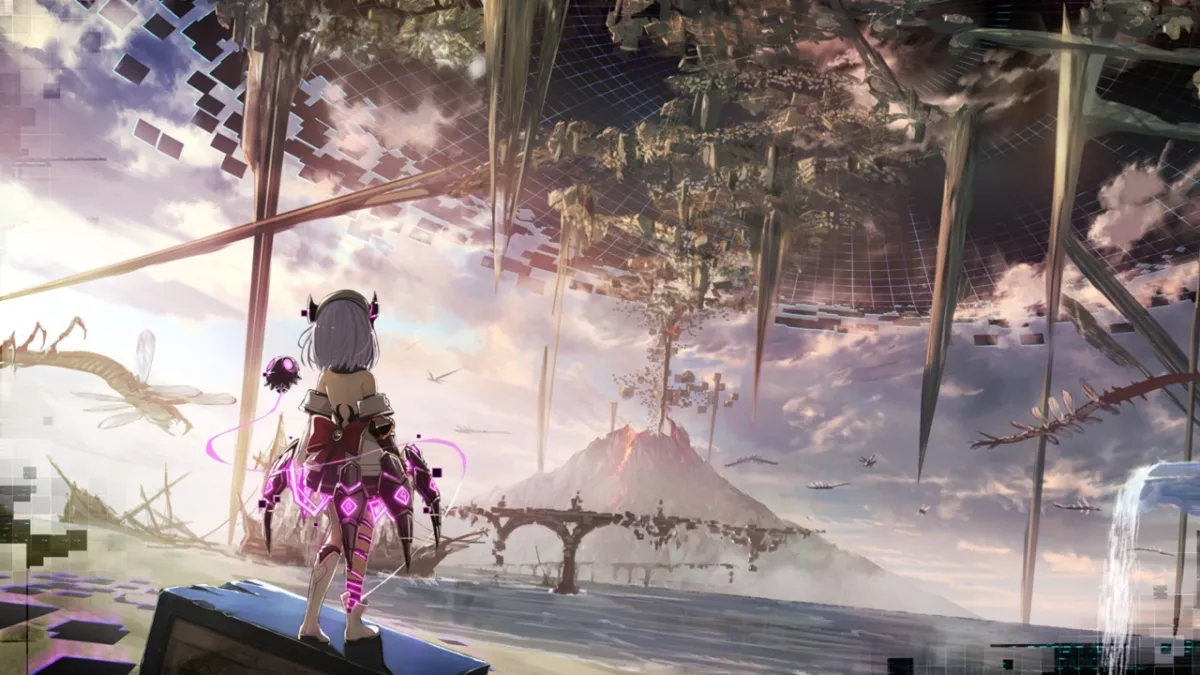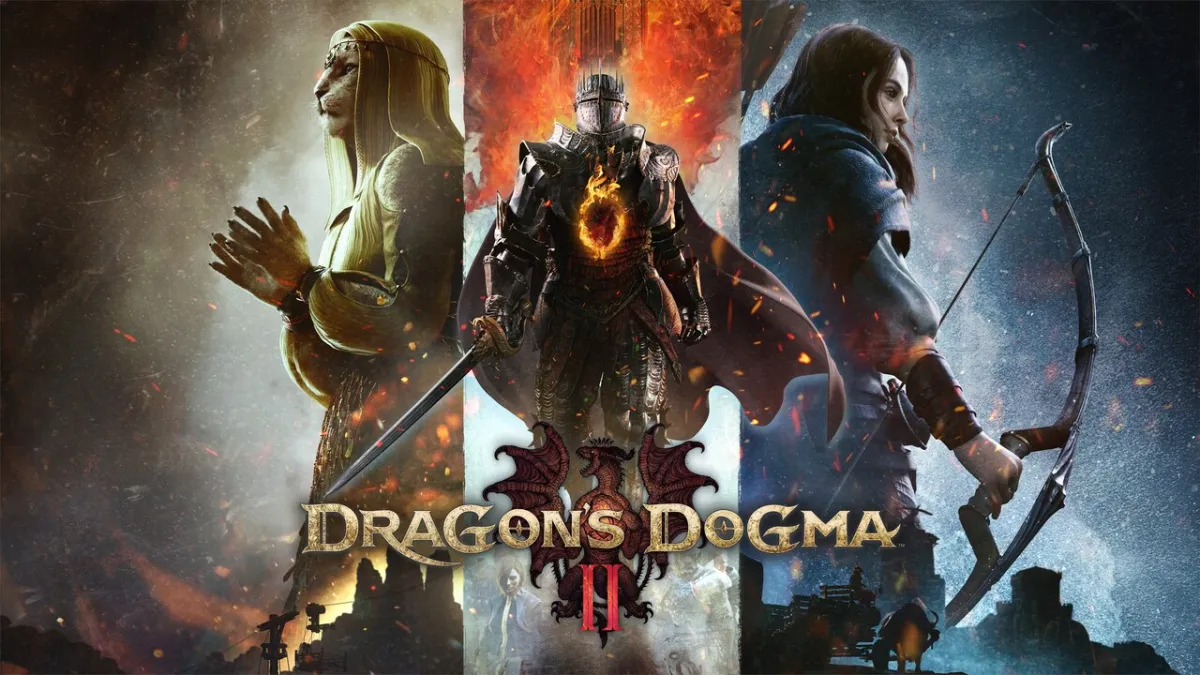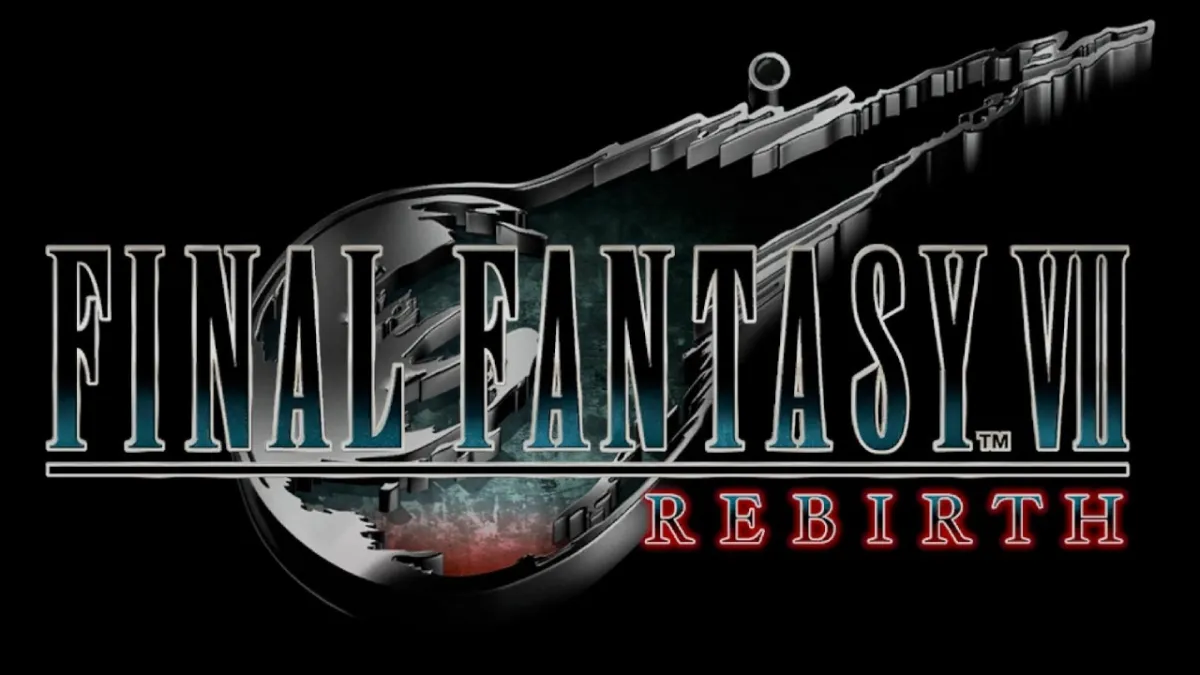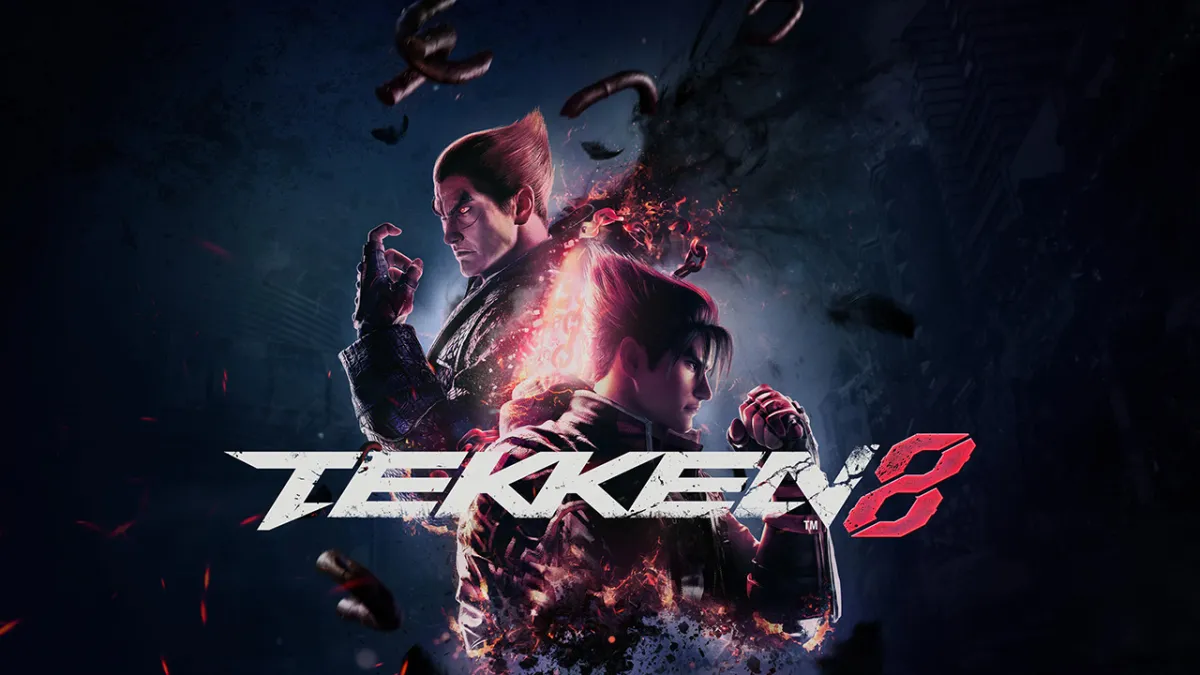“Life is not a video game,” they said.
“There is no point system, you don’t have multiple lives, there are no save points and your actions have lasting consequences,” they insisted. “Each choice you make merely leads to another choice to consider and there’s no guide to defer to for assistance. Make the right choices and you might just make it. Choose the wrong ones, however, and there may be no coming back.”
Well, meet Death end re;Quest — the JRPG/visual novel hybrid where life is a game, and a rather terrifying one at that.
In a tale that blurs the lines between reality and fantasy, we are witness to the struggle of Shina Ninomiya, a young woman who wakes up to find herself inside a video game. Ironically, said game happens to be World’s Odyssey, the VRMMORPG which she served as the director for the duration of its development until her mysterious disappearance. Thanks to the aid of Arata Mizunashi, a programmer who helped to develop World’s Odyssey alongside Shina, she realizes the gravity of her situation and learns the only way to make it out safely is to complete the game’s perfect ending.
Sounds easy enough, right?

Wrong.
As a character in a game, Shina has to play by the game’s rules and they’re not the one’s she initially set — they’ve changed. The game is riddled with bugs, causing monsters to take on an even more hideous form and certain areas to become completely inaccessible. Even the NPCs, whose personalities are determined by nothing more than several lines of code, are nothing like the way they were designed, now adopting oddly human characteristics and even taking on completely different appearances.
And this is made all the perilous by the fact that Shina has only one chance to accomplish her goal. Both she in the game world and Arata in the real one will have to make plenty of decisions as they work to find Shina a way out of World’s Odyssey (as well as why she’s even there to begin with) and making the wrong choices will not just result in failure, but death — gruesome ones at that. Their choices matter and the correct ones will need to be made if this tale is to reach a proper conclusion.
Death end re;Quest is a testament to what Compile Heart and developer Idea Factory do best: coming up with interesting themes and running with them. It’s an engrossing mystery-horror that will leave you at the edge of your seat and second guessing the notion of reality the whole way through. You’ll laugh. You’ll cry. Your stomach will turn. You’ll close your eyes out fear of what comes next. But you certainly won’t want to put it down.

And if the execution of this game’s theme was at all emblematic of the rest of it, then we’d have a sure winner. This, however, is part of Compile Heart’s Galapagos RPG brand, meaning much of it is marked by mostly coherent, but inconsistent gameplay.
Do you remember Omega Quintet (2015), the Idol RPG that was absolutely dripping in themes related to Japanese Idols and music? Battles were colorful and vibrant, much like a live performance, and it made an oft average experience a joy to both play and watch. However, one or two mechanics, namely Order Break — a feature that allowed enemies to literally ignore your turn to attack you (even if they just finished their own turn) when various nondescript conditions were reached — muddied the whole damned thing.
Well, almost as if the developers didn’t at all learn their lesson from back then, they went and did essentially the same thing here.
At face value, battles in Death end re;Quest, though lacking the visual flair of Omega Quintet or Hyperdimension Neptunia, are still quite fun. This is, in no small part, due to their dynamism. Whether it’s using one of the three attacks allotted to each character per turn to send enemies careening across the circular arena in order to clear out bugs, or carefully using your characters’ bodies to do the deed themselves in order to gain MP or buffs (at the expense of health) or entering a powered-up state (at the risk of instant death), battles are in a constant state of flux and they’re potentially the only time in the game that you can exert any level of control on your surroundings.
And nothing emphasizes that sense of control more than when the amount of bugs on the field are less than 50 percent, allowing Arata to intervene directly from the real world. Using his programming skills, he can change the conditions of the battle, accomplishing feats such as summoning a previous boss to momentarily fight alongside you and literally breaking the rules by changing the game’s genre (FPS, Billiards, Fighting, etc.) for a single, frantic turn. Yes, it’s technically cheating, but the game is buggy anyway so who cares?
The skill system was something I particularly enjoyed, utilizing a concept reminiscent of Legend of Legaia’s “Tactical Arts System” in order for characters to learn new techniques. Characters can learn new skills when the correct combination of attacks is used (a light bulb will appear in the selection screen when the conditions have been met), instead of merely leveling up. As such, it’s possible to gain ludicrously powerful skills quite early in the game if you’re willing to experiment. Admittedly, though, I can’t say I wasn’t a bit disappointed that such skills can only be used once in this manner. Instead, it would have been an effective way to grant players more control over what they bring if certain skills always had the chance to activate when the right conditions were met. This is especially the case for characters like Lucil Filarete who have more useful skills in her arsenal than the 16 she’s allowed to equip.
So where do battles go wrong? The same place it did before: balance.

I can’t speak for Hard Mode, but as far as Normal Mode is concerned, Death end re;Quest is a rather easy game for the most part. Sure, there are one or two bosses early on that will make you rethink some things, but so long as you’ve been diligent about getting new skills and have taken the time to gain new equipment by either opening treasure hidden throughout the game’s many locales or taking on quests which honestly feel like an afterthought, nothing will stump you for long. Hell, you might be fine even without doing all that, as it’s very easy to gain levels during the first few chapters where your party members will often gain a level after a battle or two. And the funny thing is that you still might not be as strong the game expects you to be, because every new character was at least three levels higher than my party when they joined.
And just when you’re lulled into a false sense of security, the mid-game comes and everything starts to go awry.
Without warning, enemies who once fell in a single round are replaced by ones with stats so high they look like mini-bosses by comparison. Or, at least, I assume their stats are that high — you can’t scan enemies directly or look up their entry in a bestiary to be sure. What’s more, some enemies (again, you can’t directly scan enemies in advance to know which ones) will start using Counter Attacks to cancel your party members’ turns, making certain fights last far longer than they should. I can’t stress enough how much I loathed this mechanic, not just because the method the related tooltip lists to counter them doesn’t seem to exist, but also since there appears to be no rhyme or reason to them. For instance, one enemy countered my first character’s spell, only to get hit by the ones cast by the second; while one boss only counterattacks when you try to heal. WHY?
It’s not even like the increase in difficulty isn’t appreciated — it is. The problem is how it’s implemented. The inability to scan enemies directly means you’ll be fighting blind, so expect to often waste a turn using attacks that turn out to be ineffective against your target. I guess this was done to counteract the fact that some characters like Lily Hopes and Clea Glaive can learn some very useful abilities by then, while others like Lucile and Celica Clayton are just strong in general, but surely there were better ways the developers could have gone about it. Mind you, none of this is insurmountable, it’s just that there are simple ways to avoid some of these issues — many of which have been included in past CH titles — so their absence here is confusing.
Unfortunately, the issues with consistency don’t end with just the gameplay — it’s present in the general design too.

For what is graphically somewhere between a PlayStation 4 and PlayStation 3 title, the visuals in of themselves aren’t bad at all. It’s one of the things that Compile Heart and Idea Factory are good at, and it helps to give this game the appearance of one that had a larger budget at its disposal. In particular, Kei Nanameda’s illustrations are on-point, and the character models are very detailed and surprisingly well-animated. The onscreen characters’ clothes and hair react appropriately to their movements, their mouths move when they speak (this is notable since your character almost always has her back turned to you, therefore there is little incentive for Idea Factory to put in that effort), and there is even some breast physics going on (especially with Lily and Celica).
Now if only the game’s maps were afforded that level of care and attention, then things would have been perfect. Death end re;Quest’s maps, though cool, are rather dull in terms of layout. They are varied as far as their appearance goes, and I’m sure players will take a particular liking to the Forest Ruins and Odyssia, but most of the other areas are basically a series of squares or circles — frequently with nothing of note inside — connected by long, cramped corridors. And to see this after all the spacious, multi-tiered areas Omega Quintet had to offer was nothing short of tragic. Otoha commenting on the area’s topography as she runs through the open fields and navigates its various fixtures are some of my fondest memories of OQ (well, not really memories — I was playing it just a few weeks ago). And considering that this takes place in a MMO, I expected locales of a similar scale, instead of the ones we actually got which are hardly worthy to be in a game with as grand a title as “World’s Odyssey.”
These confined areas, unfortunately, make progression feel like a chore at times. During the course of her adventure, there will be many times when Shina will require Arata to recode certain areas of the map in order for her to progress. These moments often come by finding the many flags and small keys located throughout any given area. The problem? The flags have exclamation points marking their location on the map, but keys, despite also being needed for progression, have no such marker. I wound up spending about half an hour in one area trying to find a key that would grant me access to one section which, ironically enough, had an exclamation marking it. Such instances are far and few between what is typically enjoyable gameplay, and that can only be seen as a good thing because it makes getting to the visual novel sections all the more easier.
And, while on the subject of visual novels, let’s finish by talking about the one aspect of Death end re;Quest that likely drew you to it in the first place: the Bad Endings.

For the longest time, I’ve been long confused by the term “torture porn.” Not because I didn’t know what it was, but because when you see everyone around you using it incorrectly, you start to question whether you’re the one actually in the wrong. Well, my eyes have been opened and now I know the truth: they don’t know what they’re talking about.
Also, the Bad Endings in Death end re;Quest may qualify.
There will be multiple times throughout the story where you will be presented with up to three options and choosing the wrong one will result in some pretty awful outcomes. Admittedly, some of the options leading up to them seem somewhat silly, like attempting to steal a legendary adventurer’s boat or eating a dead frog that was laying on the ground, but the results are anything but. The screen goes dark and some text relays to you the fate of Shina and her friends in often lurid detail. And that’s not to mention the times when you actually hear them meet their end. Anguished cries. The sound of crunching bone. Gurgling sounds and blood aplenty. It’s awfully realistic and downright terrifying at times. I can only imagine what the various VA’s reactions were when they learned a portion of their time was to be spent voicing their character’s deaths.
And what makes these endings so chilling is that you’re actually made to care about the characters beforehand. Whether it’s the lovable, though occasionally obnoxious Al Astra, the relentlessly pragmatic Clea or the dignified and friendly Lily, you can’t help but develop a soft spot for them, making their deaths all the more heartrending to read and hear.
So why put them and yourself through this? The rewards. Though typically easy to avoid, seeing Bad Endings unlocks new equipment when you reload your save file (I suggest having one to use mid-event and another before it) and various illustrations (oh, did I not mention you might also see the cast dying in horrific fashion?) that can be viewed at your leisure when you beat the game. One person’s pain is another person’s pleasure, after all.
There is a reason why Death end re;Quest is rated M and it has nothing to do with the sparse amounts of fanservice — it’s this. You’ve been warned.

The Verdict
If you’ve read my review of Mary Skelter: Nightmares, then you likely know what I’m going to say here: Death end re;Quest doesn’t do anything particularly poorly, but it often comes up just a bit short of success in almost everything that it does. Battles are dynamic and fun, but get bogged down by ill-conceived mechanics and concepts of difficulty; there’s plenty of detail applied to the characters, but exploration often didn’t receive such treatment; and the Bad Endings, though well-executed, can be off-putting at times.
Really, Death end re;Quest’s greatest qualities are its theme, atmosphere and narrative — a trifecta that is rare in JRPGs. It’s just a shame that much of the usual elements of the genre occasionally play second fiddle to everything else.







